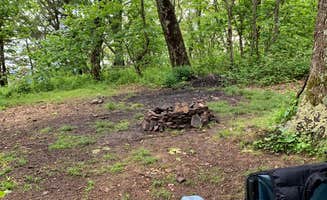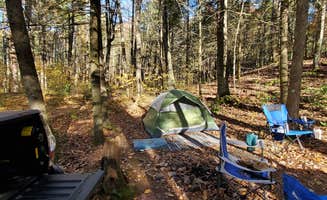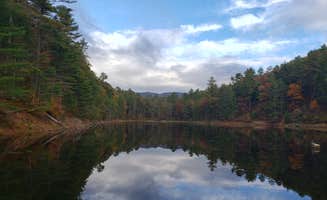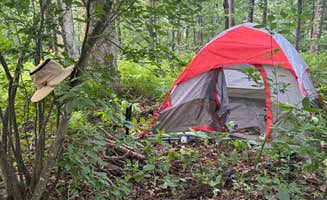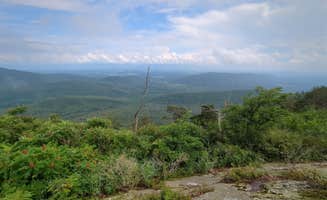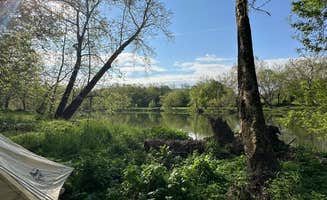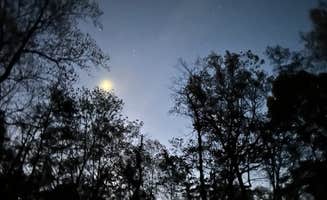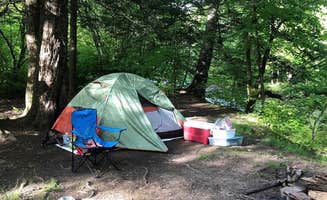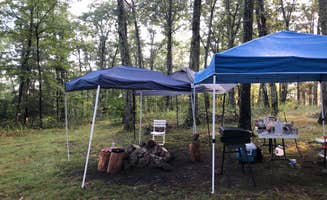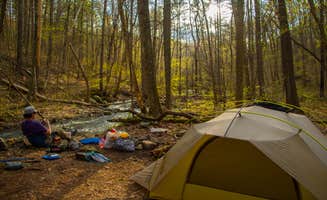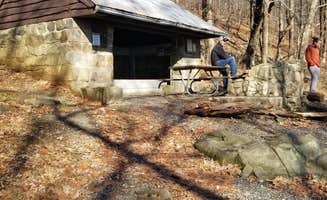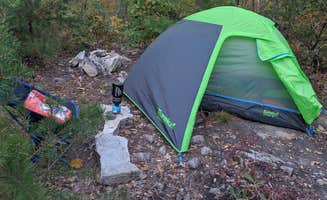Primitive camping near Dayton, Virginia offers diverse experiences across elevations ranging from 1,500 to 4,400 feet in the George Washington National Forest. Sites vary dramatically in access difficulty, with some requiring high clearance vehicles while others can be reached in standard passenger cars. Weather conditions can shift rapidly in this region, with temperature drops of 10-15 degrees at higher elevations compared to the valley.
What to do
Fishing for trout: The stocked pond at Braley Pond Dispersed Camping & Day Use Area offers accessible fishing opportunities. "The pond is stocked with trout, so small groups of fisherpeople came and went," notes Amy S. The area features both the pond and nearby streams for diverse fishing environments.
Hiking nearby trails: Multiple trail systems connect to camping areas throughout the region. At Switzer Lake, Connor W. recommends exploring the pine-lined lake trails, stating "Great views of the lake surrounded by pines." For more challenging hikes, campers can access wilderness trails from their sites.
Off-road driving adventures: The forest roads themselves provide recreation for properly equipped vehicles. "The trail was really fun and moderately difficult," writes Waseem H. about the route from Switzer Lake to Flagpole Knob. These interconnected forest roads create opportunities for day trips between camping areas.
What campers like
Varied camping environments: Sites range from lakeside to deep forest settings. At Switzer Lake Dispersed Camping, Adam G. notes "There is a huge variety of spots, starting from huge ones right on the lake to more secluded, smaller spots deeper in the woods along the creek." This allows campers to select sites matching their preference for proximity to water.
Elevated viewpoints: Higher elevation sites provide panoramic vistas across the Shenandoah Valley. At Flagpole Knob, Sydney D. describes "sunset and sunrise views are insane." These ridgetop sites experience more variable weather but reward campers with spectacular views.
Stream access: Many sites feature creek or stream proximity, providing both water sources and natural sound barriers. At Gandy Creek, Tommy S. discovered "a hidden waterfall across the creek. If you listen, you can hear the loud falls over the normal creek sounds." These water features enhance site selection criteria beyond just flat tent spaces.
What you should know
Weather preparedness: Mountain elevations experience rapid weather changes. Pack layers and rain gear regardless of forecast. At Dolly Sods Backcountry, Lucille W. warns "Definitely be prepared for high winds and rain. We hiked in in warm weather and once we reached the top of a long entrance road we found snow."
Road conditions: Access roads vary dramatically in quality. Matthew F. notes about Switzer Lake: "The road is pretty rocky, but nothing crazy. Take it slow and most vehicles can get by." For Flagpole Knob, David B. cautions "This site requires a 4x4 vehicle with clearance. The trail leading to and from camp can be a bit tricky."
Wildlife considerations: Secure food properly to prevent wildlife encounters. Emil D. advises "There are bears here, so lock up your food in the car. We have encountered a bear at or around the campsite 3 times." Smaller wildlife can also cause problems, with raccoons known to steal unsecured items including shoes.
Tips for camping with families
Pond-adjacent sites: Families with children often prefer water access for activities. At Crisman Hollow Road Camp, Waseem H. notes "It's a quiet area with many spots right on the water. There was one really nice hiking trail by the bridge." These water-adjacent sites provide natural entertainment for children.
Sites with established facilities: Evan P. describes Braley Pond as "Dispersed Glamping" with several family-friendly features: "Car could be parked right next to us on site. Next to a creek, so good sounds and cool environment. Some walking trails. A pit toilet is located at the picnic site."
Weekday camping: Weekends attract larger crowds to popular dispersed sites. Adrian F. notes at Flagpole Knob: "Very spaced out. Everyone you run into is nice and welcoming." Midweek visits significantly increase site availability and reduce noise from other campers.
Tips from RVers
Vehicle clearance limitations: Carefully research access roads before attempting in larger vehicles. About Switzer Lake, David S. cautions "From what I hear from another camper, it is rough coming the other way with anything other than something that can scale rocks." Many sites require high-clearance vehicles, limiting RV access.
Drive-in site options: Some areas offer limited drive-in camping suitable for smaller camper vans or truck campers. Lauren M. reports "Since I sleep in my Jeep, I needed a drive-in spot. I drove past the lakefront sites and there are a few really nice spots right past the paved bridge on the dirt road, some next to the creek."
Road width constraints: Forest roads leading to many sites are narrow with limited passing areas. Mike C. warns "Go slow as several sharp corners with huge drops and inexperienced drivers coming towards you." This creates particular challenges for wider vehicles attempting to navigate to campsites.


